Armed with a pristine sheet of A4 attached to a clipboard; and with a pencil tightly gripped, we set off for an expedition round the perimeter of the school; heading first for the place where the fence at the front of the school turns a corner.....
.....to run along the boundary between our soccer field and the tennis club next door.
We marked a blob on the paper to show that corner. We would mark all the corners with blobs and draw lines to show the fence between the blobs (or corners).
We needed to remember two things to stop us from getting in a muddle.
- First we should always face in the same direction to draw each line
(we were able to use the
sun to help us)
- Second, we should always keep our clipboard in the 'tummy place' (we marked the side of the paper where our tummy would touch it if we were holding the clipboard the right way round).
.....look carefully at the direction the fence follows; face up; hold the clipboard in the 'tummy place'; draw the line; mark the next blob where the fence turns a corner - and run to the next corner.
.....look carefully at the next bit of fence; face up; hold the clipboard in the 'tummy place'; draw the line; mark the next blob - and so on.
We followed the fence right the way round the perimeter of the school (allowing a bit of poetic licence in the complicated part where cars drive in and out) and do you know what? We ended up back where we started. We had made a joined-up shape of some sort.
But what shape had we drawn?
A chorus of "It looks like a boot," rang out. Ah yes, but there is a proper name for the shape; we don't have to say 'it looks like a....'
Back to the classroom. Let's count the sides. Hmmm.....nine.
Think. We know that a shape with 3 sides is called a triangle; one with 4 is a rectangle (or a square; a trapezium; a parallelogram.....)


We know that a shape with 5 sides is a pentagon and one with 6 is a hexagon.
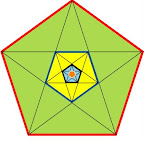
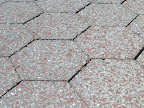
We learned that in fact any shape with 5 sides is called a pentagon. Any shape with 6 is a hexagon.
Any shape with 8 sides is an octagon (not an octopus)
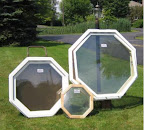
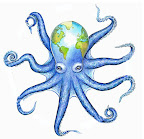
and we learned that one with 7 is a heptagon.

And after we had thought about what the Swiss/French word for ninety is (nonante) we were able to work out that a nine-sided shape might be called a nonagon (it is!)
One with 10 sides is a decagon
(think
 and the decathlon).
and the decathlon).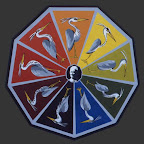

So our 'boot-like' nine-sided shape is a nonagon. Now you know!
Oh and P.S. I just can't resist telling you about a few more polygons (that's what 2-dimensional shapes with straight sides are called) I have discovered. There is the pentadecagon which has 15 sides; the pentacontagon which has 50 sides; the octacontagon which has 80 sides; and my almost favourite, the chiliagon, which has 1,000 sides.
My favourite? A polygon with ten duotrigintillion sides
(ten duotrigintillion - also known as a googol - would be written like this: 10,000,000,000,000,000,000,000,000,000,000,000,000,
000,000,000,000,000,000,000,000,000,000,000,000,000,
000,000,000,000,000,000,000,000)
It has the rather splendid name of a googolgon. I can't quite imagine what it would look like; although a circle springs to mind!
And finally.....
Apparently, the name Google is a play on the word googol, chosen because of the 'hugeness' of the number it represents (all those zeros). According to the Google website, Google's use of the term reflects the company's mission to organize the immense, seemingly infinite amount of information available on the web.
And you can't say fairer than that!




No comments:
Post a Comment